Review: Öhlins New 2022 RXF38 M.2 Fork
It's easy to wax lyrical about Öhlins' illustrious heritage in motorsport suspension, but the Swedish brand's move into mountain bike suspension forks hasn't been the tour de force many were expecting. Tight bushings, firm dampers, small negative volumes and a few reliability issues were serious flies in the ointment. With the RXF36 M.2 trail/enduro fork, Öhlins got into their stride. It was far suppler than the RXF36 EVO that preceded it and, along with the DH38 downhill fork, took the fight to the MTB industry incumbents.
Öhlins already brought out the RXF38 M.1 to compete with the Fox 38 and RockShox Zeb in the long-travel enduro/freeride/ebike market. That fork was OEM-only and used some parts borrowed from the RXF36 and DH38. The M.2, Öhlins say, was designed from the ground up with every part optimized for the application. So is it any good?
Öhlins already brought out the RXF38 M.1 to compete with the Fox 38 and RockShox Zeb in the long-travel enduro/freeride/ebike market. That fork was OEM-only and used some parts borrowed from the RXF36 and DH38. The M.2, Öhlins say, was designed from the ground up with every part optimized for the application. So is it any good?
RXF38 Details
• Travel: 160, 170 or 180mm
• 29" only
• 44mm or 51mm offset
• 1.125/1.5" steerer (no 1.8" option)
• Air spring only (for now)
• External adjustments: low-speed rebound, low-speed compression, high-speed compression with lockout
• Three-chamber air spring with separate ramp up valve
• 200mm post mount (max rotor 220mm)
• Configuration tested: 170mm travel, 44mm offset
• Weight: 2,315 grams (actual, uncut steerer)
• MSRP: $1,350 USD / €1,238 (excluding tax)
• www.ohlins.com
• Travel: 160, 170 or 180mm
• 29" only
• 44mm or 51mm offset
• 1.125/1.5" steerer (no 1.8" option)
• Air spring only (for now)
• External adjustments: low-speed rebound, low-speed compression, high-speed compression with lockout
• Three-chamber air spring with separate ramp up valve
• 200mm post mount (max rotor 220mm)
• Configuration tested: 170mm travel, 44mm offset
• Weight: 2,315 grams (actual, uncut steerer)
• MSRP: $1,350 USD / €1,238 (excluding tax)
• www.ohlins.com
Design Details
Chassis
Aside from the obvious move to 38mm stanchions in a single crown fork, Öhlins were keen to emphasize the work they've done to fine-tune the flex pattern. The lowers are said to be a bespoke blend of the DH38 and RXF36, matching the stiffness of the lowers with the upper tubes and crown.

The axle clamps the hub against the brake side leg, without pushing the other leg against the hub. The pinch bolt then secures the leg to the floating axle.
The thru-axle is a floating design, where a step on the right hand side of the axle clamps the hub against the left hand leg as the axle is tightened. Then, a pinch bolt on the right hand leg clamps the axle to the other leg. This design ensures the legs remain exactly parallel no matter the tolerances or wear of the hub, and that should help keep friction that bit lower. There's no QR option, but both bolts use a 5mm Allen key and it only takes a few seconds to remove the wheel.
Finally, the RXF38 uses a 200mm post mount. That's no bad thing in my book - if you want to run a 180mm rotor you've probably got the wrong fork. With a 200mm rotor, the lack of an adapter and the shorter caliper bolts will save around 24g over a PM 180 fork. Although if you're fussed about 24g, it probably still isn't the fork for you.
Damper
The M.2 houses the same twin-tube TTX18 damper used in the DH38 and RXF36. The 18 refers to the 18mm main piston diameter, which gives a lighter range of damping adjustment compared to the older 22mm piston, which really was on the brutal side. The external damping adjustment consists of low-speed rebound (16 clicks), low-speed compression (16 clicks) and high-speed compression adjustment. Unusually, the firmest of four high-speed settings acts as a lockout, leaving three high-speed options for descending. If that's not enough tuning for you (for most people it will be), Öhlins have a range of alternative valving tunes which can be fitted through their service center partners.
Air Spring
The cartridge spring is the same three-chamber design Öhlins have been using for years, but for the RXF38, the negative spring volume is a little bigger to soften the beginning stroke somewhat. The negative volume can be tuned with plastic volume spacers if you want a more "old-school" air spring feel with a firmer start to the stroke. The fork I have came with no negative volume spacers and I felt no need to add any.
The three chamber design is similar to Manitou's IRT or EXT's HS3 air spring system in that there's a third chamber with a separate valve to control the progressiveness. But in Öhlins' case, the ramp up chamber is housed in the air shaft and adjusted at the bottom of the fork, rather than the top.
The main spring has two chambers - a positive chamber above the piston and a negative chamber below. A transfer port allows the pressures to self-equalize at the right point in the travel so the ratio of pressures, and therefore the spring curve, is the same for riders at any point on the weight spectrum. So far, so normal. But while most forks use plastic volume spacers (tokens) to decrease the volume of the positive chamber, thereby increasing the compression ratio and making it harder to bottom-out, three chamber forks instead use a ramp up chamber. This works a bit like a volume spacer which reduces in volume as the fork compresses. How much and how early it shrinks in size depends on the pressure in the ramp up chamber relative to the main chamber.
When set up correctly, the air pressure in the ramp up chamber is somewhere around double that in the main spring at the start of the travel. This forces an internal floating piston (IFP) to the top of the ramp up chamber, so it takes up the maximum volume of the positive chamber. But when the fork compresses to the point where the main spring pressure exceeds the ramp up chamber (somewhere in the middle of the travel), the IFP starts to slide down into the ramp up chamber. The higher the pressure in the ramp up chamber, the later in the stroke the IFP will start to move and the less it will move. This means the main positive chamber remains smaller, so the fork is more progressive. Decreasing the ramp up pressure has the opposite effect, making the fork less progressive.
This system has a couple of big advantages over volume spacers. Firstly, the progression can be adjusted in seconds on the trail side with a shock pump (no need to take the fork apart to add or remove tokens). Secondly, because the volume of the positive chamber increases as the fork moves deeper into its travel, the spring curve has more mid-stroke support relative to the bottom-out force. This should help address the common air spring problem of lacking mid-travel support while being hard to use full travel.
Öhlins use a self contained cartridge-style air spring, rather than using the stanchion wall as the air spring housing. This has a couple of advantages too. Firstly, it allows you to remove the air spring for servicing or to change travel (which requires a separate air spring) without having to take apart the fork. Just lay the fork horizontally to avoid oil escaping, deflate the spring, undo the top cap with a cassette tool, remove the foot nut with a spanner and pull the whole spring out. It takes just a couple of minutes to change travel, which could be useful for people who want one fork for different riding styles or terrain types. A second potential advantage is that you could swap back and forth between air and coil springs. Coil springs scratch the stanchion wall in use, so with a conventional air spring, once you go coil you can't go back. The self-contained air spring has no such issues, although Öhlins don't currently offer a coil spring for the RXF38.
Servicing
Öhlins recommend performing a basic lower leg service and oil bath change every 50 hours of riding. Every 100 hours or one year they recommend a full service including changing fork seals and bump stops, plus servicing the air spring and damper. The air spring service can be done at home but the damper must be serviced by an Öhlins service center.
The RXF38 M.2 uses 15ml of bath oil in each leg, with the damper side using damper oil instead of regular fork lubrication fluid, presumably in case oil makes its way into the damper during use. Interestingly, this isn't the case for the RXF36 M.2 or the RXF38 M.1, both of which use 10ml of lubricating oil in both legs. Öhlins say they've added a scraper seal to the RXF38 M.2's air spring to prevent lubricating oil from making its way into the spring. It's worth noting that the lower leg oil volumes are a bit higher in the RockShox Zeb (20ml in both legs) and Fox 38 (20ml in the spring side and 40ml in the damper side), which might result in a faster drop off in performance for the Öhlins fork, though I can't comment on this from personal experience because it depends on too many variables.
Objective Measurements
The RXF38 I have on test with a 44mm offset and 170mm travel weighs 2,315g with an uncut steerer; that sits in between the RockShox Zeb (2,297g) and Fox 38 (2,363g).
The axle to crown measures 583mm, which is just a hair shorter than the Fox 38 (585mm) and Zeb (588mm). I measured the full usable travel with the 170mm spring at 165mm. I did this by deflating the spring and fully bottoming the fork out, then I re-inflated and equalized the spring, put the bike in a stand so the front wheel was unweighted, then measured from the wiper seal to the O-ring. Measured in the same way, the Fox 38 provides 167mm of travel and the Zeb delivers the full 170mm.
Before testing, I put the fork on a basic spring tester. This consists of a bottle jack to compress the fork, a force plate to measure the force and a digital scale to measure the position in the travel. Because it's designed to measure shocks, it can only measure the first part of the travel. I used the settings recommended by Öhlins in this test. In the graph above, I've included the readings from the RXF38 alongside its two major rivals, which were measured in the same way. As you can see, the curves are quite noisy due to friction in the forks, so take them with a pinch of salt. But the takeaway is that the RXF38 has a high amount of spring force near the start of the travel, similar to the Zeb, but with these settings, it has a slightly lower spring force in the middle of the travel. Once I started testing on the bike, I found these settings too soft so increased the air pressure in both chambers from the settings measured here to make it firmer in the mid- and end-stroke. This of course will also make it firmer at the start of the travel.
Another, less scientific, test is to compress the fork to sag, then push up and down vertically on the grips without pressing the brake. This tests how much binding friction there is when the force is off-axis to the fork stanchions. Though I can't put a number on it, the Öhlins is impressive in this test, taking very little force to budge from its sagged position.
Setup
When I began testing in early May, Öhlins didn't have a setup chart to start from, but over the phone they suggested around 100psi in the main chamber and 200psi in the ramp up for my 86Kg weight, which is in line with the setup chart opposite. But this was too soft and I was bottoming out too easily. I went up to 125psi in the main chamber and 265psi. I was still able to use almost all of the travel on big hits, with just 10mm or so in reserve for things not going to plan, so I didn't want to go any softer than this in the ramp up chamber.
On rebound, my window was 10-12 clicks from closed. Compression is less set in stone but I've settled on 12-14 clicks on LSC and 2 clicks (1 from open) on HSC. There's a useful range of adjustment on all three dials, with neither end of the spectrum being unusable, yet I felt no need to go firmer or lighter than the damping range allowed.
On-Trail Performance / How Does it Compare?
I tested at 170mm travel only, aboard a Forbidden Dreadnought and a Privateer 161. I tested on familiar trails in the Forest of Dean, Bike Park Wales and Innerleithen downhill tracks. This included back-to-back tests comparing the RXF38 directly to the Fox 38 on Rim Dinger at Bike Park Wales and Cresta Run at Innerleithen.
On the bike, it's immediately obvious the RXF38 has a firmer feel early in its travel, especially when compared to the Fox 38. Although the initial stiffness appears similar to the Zeb in the above graph, the RXF38 feels firmer at the very start of the travel than the Zeb once set up with 115-125psi. On the other hand, the Zeb will top-out if the rebound is set very fast, while the RXF38 never tops out despite that firm initial spring force, even with the rebound fully open .
When climbing, it stays noticeably higher in its travel than the 38 or Zeb, making it feel almost like the fork is locked out on steep climbs where the front is lightly loaded. On a flatter gradient, the fork will move into its travel slightly, and bob a little under seated pedaling - which is a good sign from a sensitivity perspective. I can't say I ever used the lockout mode on the trail, but occasionally I do like to lock out both ends of a bike to spend a few minutes pedaling out of the saddle, particularly on a smooth climb during a long ride where I want to mix things up and give my bum a rest. It's not a lockout that gets in the way or compromises other adjusters, so why not?
On the descents, there's a good amount of mid-travel support - holding the fork up under braking and cornering loads - relative to the amount of travel it used on the biggest hits. On some descents, the fork wouldn't feel overly soft, yet the O-ring told me I was getting close to the bottom out without pushing too hard. This is arguably a good thing compared to many air sprung forks, which lack support in the middle of the travel yet make it very hard to use the last 10-15% of squish. This is particularly true when compared to the Zeb, which can be over-keen to push through the middle of its travel under braking.
As far as stiffness goes, I haven't ridden the RXF36 for a while so I can't say how it compares with confidence. I have done back-to-back tests comparing the Fox 36 to the 38, and the RockShox Lyrik to the Zeb; in both cases the stiffer forks never felt worse but the 38 and Zeb were less harsh, more composed and more predictable in really big holes, blown-out berms or shoebox-sized rocks. Compared to those other 38mm forks, the RXF38 holds its own in these situations, never losing composure or becoming harsh when smashing through braking bumps or rocks.
The most informative test was on Cresta Run at Innerleithen on a dry day when the track was rough and loose. After riding the Performance Elite Fox 38 all morning on a Forbidden Dreadnought, I swapped to the Öhlins RXF38. While it did a great job of eating up the bumps in most situations, feeling particularly good when loaded up in a bomb-hole or berm, the Öhlins fork didn't keep the front wheel as glued to the trail in a few places. I felt the front wheel skipping off the ground and loosing traction on some fast and rough corners, resulting in some sketchy moments. And though the RXF38 is butter smooth when fully weighted and into its travel, it's noticeably more abrupt when the fork fully extends then reconnects with the ground (which happens quite often when riding rough, fast terrain off the brakes). This occasional harshness took me by surprise especially on my first run after swapping back to the Öhlins fork.
I was using slightly more travel on the Öhlins fork when setup at 125psi/265psi (The Fox fork was set to 96psi, two tokens), but I decided to try reducing the main spring pressure to 115psi and slowing down the rebound to 10 clicks to see if it improved off-the-top sensitivity. This certainly closed the gap on the traction front, but made the fork noticeably less supportive than the 38, and the slower rebound started to make it harsher on high frequency braking bumps.
The bottom line is the RXF38's smaller negative volume results in a firm start to the travel, which reduces traction and creates occasional harshness - or forces you to compromise on support.
Pros
+ Smooth and controlled when into its travel and unfazed by chunky terrain
+ Very usable range of adjustments
+ Able to use all of its travel without feeling too soft in the mid-stroke
Cons
- Noticeably firmer at the start of the travel, which reduces traction and predictability in some situations, particularly when compared to the Fox 38
- More expensive than its main rivals (in some markets)
- Recommended spring settings a little on the soft side
Pinkbike's Take
Author Info:
Must Read This Week
How to Watch the 2024 Mountain Bike World Cup [Update: Staylive Offering Access in New Zealand, South Africa & More]
60235 views
60235 views
[UPDATED] Final Elite XC Results & Overall Standings from the Mairiporã XC World Cup 2024
41172 views
41172 views
Sign Up for the Pinkbike Newsletter - All the Biggest, Most Interesting Stories in your Inbox
PB Newsletter Signup
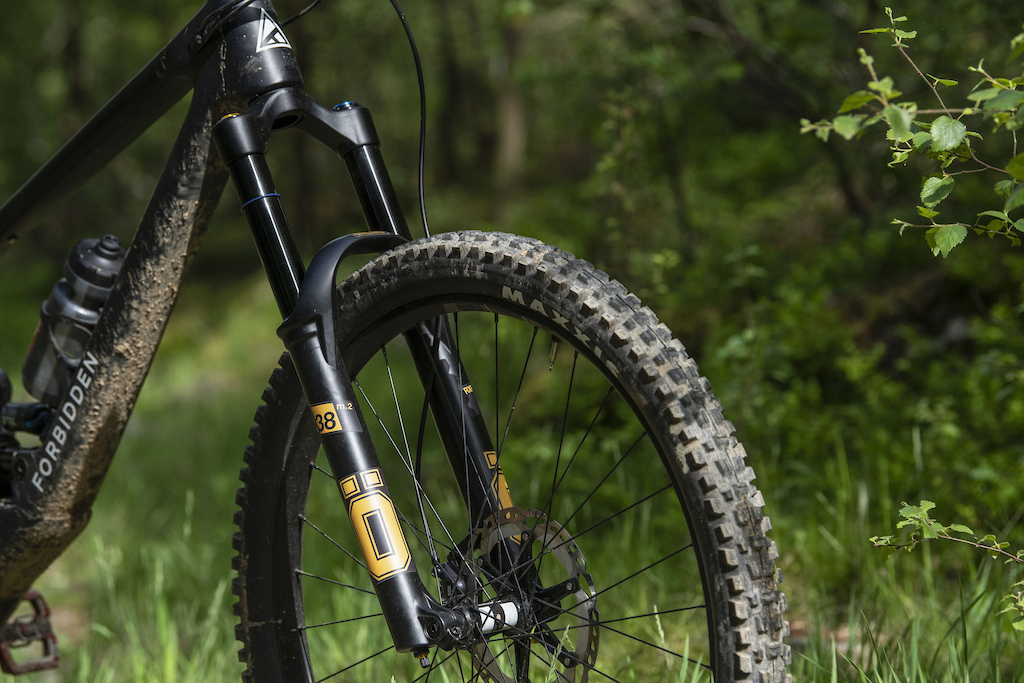

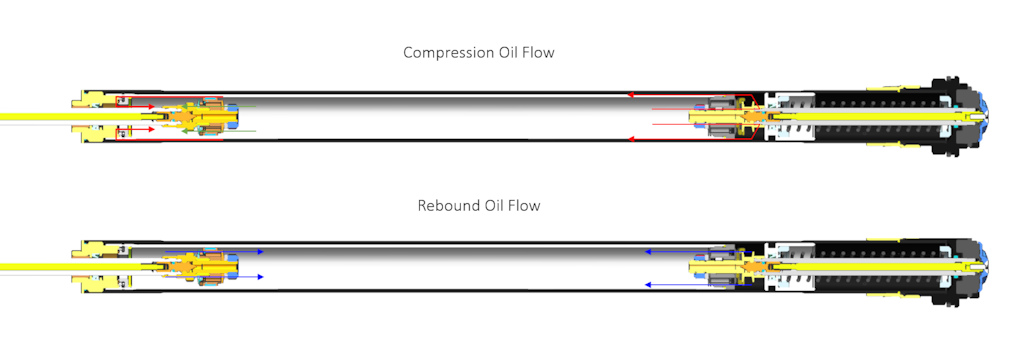
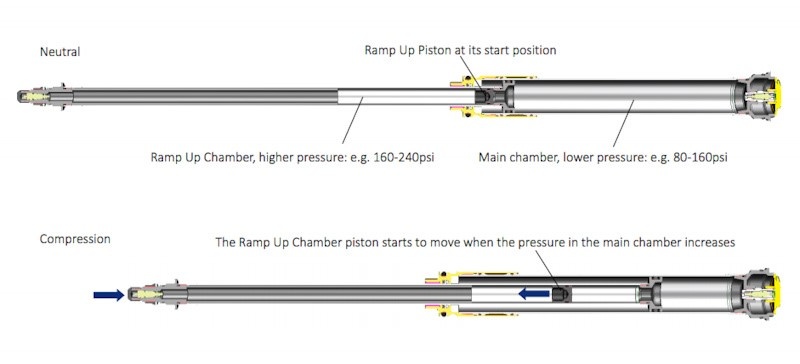
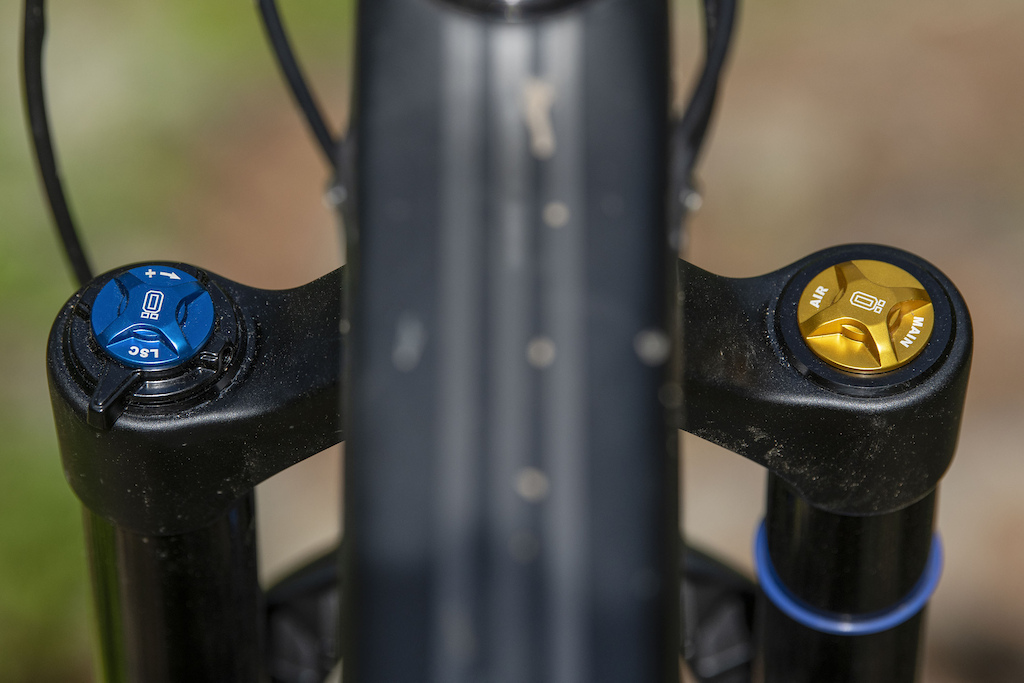

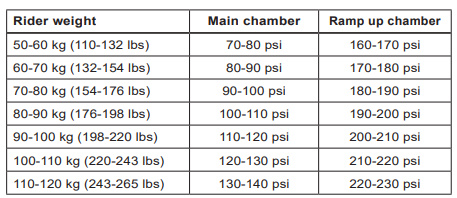
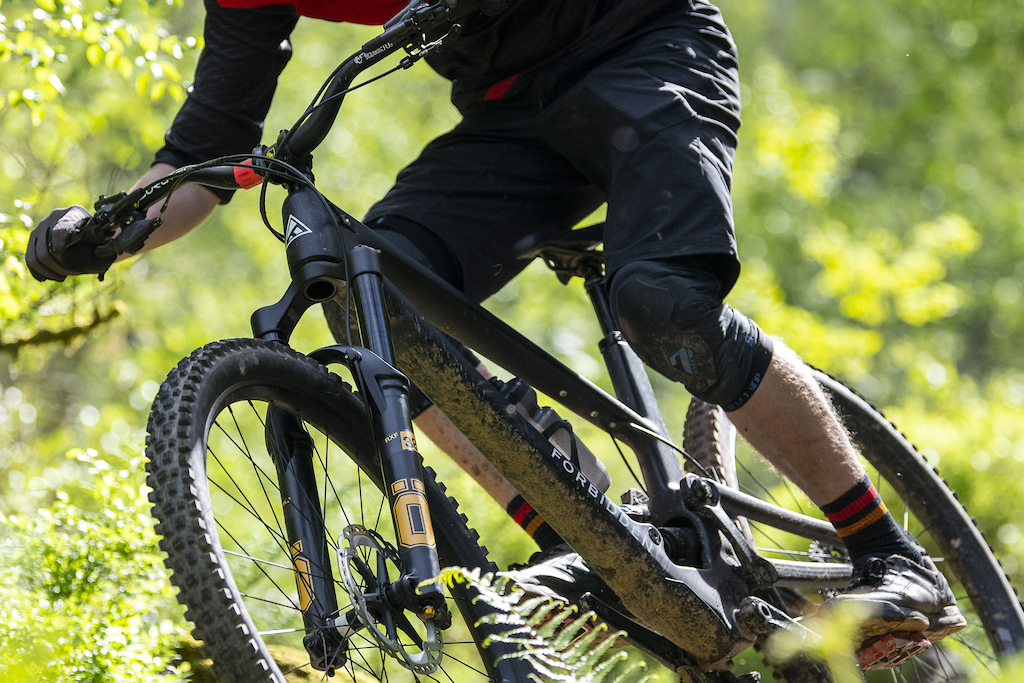

www.pinkbike.com/news/review-vorsprung-secus-air-spring-upgrade.html
Go back to this review and in the battle of Zeb Vs 38 the winner was Lyrik (with older air spring):
www.bikeradar.com/reviews/components/forks/suspension-forks/rockshox-zeb-vs-fox-38-fork
Also worth noting in the YouTube review that the Z1 coil sounded epic were it not for weight (yawn) and gaps between spring rates (Vorsprung Smashpot has narrow gaps).
Definitely need to get a coil in the Zeb 38 and Ohlins and compare again!
p.vitalmtb.com/temp_photos/14450/large_internals_272145.jpg
That's an interesting little addition that no one else seems to have thought of...
Since the coil spring and the air spring run in a series, the breakaway of the air seal is masked by the coil. The coil allows compression until the pressure builds up and/or the time needed for the seal to break away has been achieved, at which point the air spring takes over as the main spring.
Someone has pointed out in the EXT review that the m2 coil only weighs a quarter pound more than the EXT, so maybe the EXT solution is over-engineered. I lend my bike out a lot, so I like being able to easily adjust air pressure, so theres that.
I love my EXT. The Suspension Syndicate guys let me demo one and I was so blown away that I just ponied up and got one.
At the same time, you can buy pretty much any other fork and a smashpot coil conversion for less......
I hope 1.8" ends up like Overdrive2.
can't see why not
Suspension Syndicate initially set it up "EWS rider stiff" because I'm an idiot and asked them too, and it was of course wayyy to stiff for me, but even riding with those settings it was smoother off the top and had more traction than any other air fork I've ridden, including DVO.
Once I tuned the pressure and compression down to realistic levels, the mid stroke support never went away. It stays super high in its travel AND is more grippy than anything else short of a coil dual crown.
I can't state how much better this fork feels than anything else I've ridden.
Have you tried the fox 38 and/or Mezzer? Curious how those compare to the ext
The only thing I'll add relevant to the thread is that the Mezzer is largely great because of IRT--this can be accomplished on other forks via the aftermarket.
However, the EXT has a dual positive air spring as well (copying the IRT), and the negative spring equalizes at topout, not in the travel itself. On Rockshoxs forks I can feel that "notch" in the travel when the air equalizes. EXT also has a small coil at the bottom of the air spring pushrod, making it a hybrid system where the first inch or so is pure coil movement, and the transition is seemless. As much as I want to try the Mezzer, the EXT is both the most slippery and most supportive fork I've ever ridden.
At least IME, the mezzers only “flaw” is the initial sensitivity. Whether is the damper or stiction I can’t say, but it’s like an 8/10 there where it’s 9-10/10 everywhere else. Could be setup, but if you read enough, you can see that trend. Most folks run less then recommend pressure and light compression.
Sounds like the ERA improves on that portion
The weight at 2050g of the mezzer is a big plus too . And ease of travel adjust and service
RRP for Factory is 1.686,88 €
Apples to apples and so on.
::holds up hand with index finger and thumb apart, about the thickness of a skinny green bean::
This is such a weird way to describe it, and not sure if it's technically correct. The volume of the main chamber _must_ decrease through the travel, otherwise there would be no spring effect. I get you mean the effective\equivalent starting volume increases as the IFP moves, but wouldn't it be more accurate to say that the main volume doesn't decrease as fast as it would with static spacers?
Price / performance wise there more options
And yet it felt the firmest\harshest off the top in riding... So this "test" is pretty much useless...
Major bummer from Ohlins.
As far as the vital test not being convincing, I agree it was heavy on praise but Hjord has spent more time on the 36 so it makes sense he could dial in the 38 quickly to his liking. In contrast Seb states he hadn't been on the 36 in a while and is way high with his ramp control pressure and seems to have jumped straight from 200 to 265 without trying much in between. Hjord is more in line with the recommended settings and is also running less LSC than Seb even though their weights are 1kg different. Maybe Seb struggled with setup? I don't know.
Lastly, I was a little surprised at this review given that the 36 was a suspension of the year nominee and the DH38 was the winner with the the same tech inside. The main difference is that Dan Roberts did both of those reviews. If he had done this review it might have been completely different because of his experience with the others.
I think the point Im trying to make is that both tests are equal because it's someones opinion and reading different opinions give a better idea of the products capabilities. sorry for the long response
Why is this constantly overlooked on fork releases or reviews?
A sad message from Outside: "The Pinkbike acquisition adds considerable readership and revenue in the cycling space, and thus adds momentum to the company’s Outside+ membership program. Outside+, introduced this year, offers enthusiasts various bundles of content, services, discounts, and other offerings for a $99 annual fee. The membership revenues complement Outside’s revenues from advertising, creating a business model for publishing that CEO Robin Thurston said is more sustainable than traditional media models in the long term. Adding Pinkbike, CyclingTips, and Trailforks gives Outside+ more critical mass, making membership purchases more desirable for enthusiasts and providing more readership for advertisers inside and outside the industry, Thurston said.
“This acquisition is a key moment in fulfilling our mission to build a vibrant home where active lifestyle participants will discover a wide range of content and tools to fuel their adventures. We’re very excited and honored to welcome the Burkats and their team to our family,” said Thurston. “As a lifelong cyclist, I’m a huge fan of these brands, which are perfect complements to our own cycling titles—VeloNews, Peloton, Beta, and Bicycle Retailer—and to our recent acquisition of Gaia GPS, the dominant mobile mapping app for hikers, backpackers, and overlanders. The marriage of these businesses creates a truly comprehensive resource for all types of cyclists and outdoor adventurers.”
Will my money be refunded if, before the subscription runs out, more paywalls are added to tforks?
Don't tell them I said this, but Trailforks is probably worth $99 a year alone to me anyway.
I really want a space that gives attention to all bike products (well, not Chinese Amazon crap). Not necessarily reviews even, just existence. Let the company provide their own product info… I just want to know what’s out there!
Regardless, EnduroMag is pretty damn amazing at reviews of stuff. The best out there and you can see it for free. But yeah PinkBike is so great at highlighting all the new stuff right when it comes out. Thankfully Vitalmtb.com fills that void and is free so far. Between Vital and EnduroMag, you'll have everything you need without a PB subscription. The comments section hardly exists there...that is the one unique thing about PinkBike.